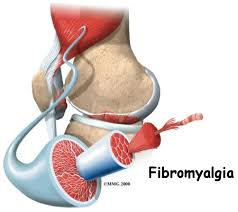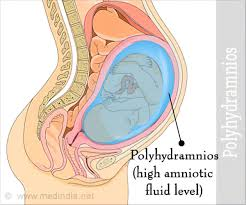A nurse is discussing fibromyalgia with a client who is concerned about developing the disorder. Which finding would the nurse identify as a risk factor for this disease?
Diuretic use.
Emotional or physical trauma.
Overweight.
Being an adolescent male.
The Correct Answer is B
Choice a reason:
Diuretic use is not typically associated with an increased risk of developing fibromyalgia. Diuretics are commonly used to treat conditions like hypertension and edema by helping the body eliminate excess fluid, but they do not contribute to the onset of fibromyalgia¹.
Choice b reason:
Emotional or physical trauma has been identified as a risk factor for fibromyalgia. Individuals who experience significant stress or traumatic events may develop the disorder due to changes in how their central nervous system processes pain. Stress can lead to long-lasting effects on the body and may trigger fibromyalgia or worsen its symptoms²³⁴.
Choice c reason:
Being overweight is not a direct risk factor for fibromyalgia, but it can exacerbate symptoms in those who have the condition. Excess weight can increase the strain on the body and may contribute to the chronic pain and fatigue associated with fibromyalgia. However, it is not considered a causative factor¹.
Choice d reason:
Being an adolescent male is not a recognized risk factor for fibromyalgia. The disorder is more commonly diagnosed in women, and while it can occur at any age, it is most often diagnosed during middle age. Gender and age alone are not sufficient to determine the risk of developing fibromyalgia.

Nursing Test Bank
Naxlex Comprehensive Predictor Exams
Related Questions
Correct Answer is D
Explanation
Choice a reason:
For individuals with Crohn's disease, eating three large meals may not be the best approach as it can overwhelm the digestive system. Smaller, more frequent meals are often recommended to ease the digestion process and better manage symptoms.
Choice b reason:
Drinking water during meals can help with digestion, but there is no specific requirement to limit it to ten ounces. Adequate hydration is important, but the amount should be tailored to individual needs and tolerances.
Choice c reason:
Choosing coffee over cola is not necessarily beneficial for Crohn's disease management. Both beverages can potentially irritate the gastrointestinal tract, and individuals with Crohn's disease are often advised to limit caffeine and carbonated drinks.
Choice d reason:
Increasing protein intake can be beneficial for clients with Crohn's disease, especially if they have experienced weight loss or malnutrition due to their condition. Protein is essential for healing and repair of tissues, and maintaining adequate protein levels is important for overall health.
Correct Answer is D
Explanation
Choice A reason:
While polyhydramnios can be associated with congenital anomalies or fetal distress, it is not a direct indication of these conditions. Polyhydramnios refers specifically to the excessive accumulation of amniotic fluid. Congenital anomalies may lead to polyhydramnios if they affect the fetus's ability to swallow and process amniotic fluid normally, but the presence of polyhydramnios alone does not confirm these conditions.
Choice B reason:
Elevated levels of alpha-fetoprotein (AFP) in the amniotic fluid can be indicative of neural tube defects or other fetal abnormalities, but they are not a defining characteristic of polyhydramnios. Normal AFP levels in amniotic fluid at 15 to 21 weeks' gestation range from 10 to 150 ng/ml. Polyhydramnios is diagnosed based on the volume of amniotic fluid, not the AFP levels.
Choice C reason:
Carrying more than one fetus can lead to an increased amount of amniotic fluid, potentially resulting in polyhydramnios. However, the diagnosis of polyhydramnios itself does not imply a multiple gestation pregnancy. It simply indicates that there is more amniotic fluid than usual.
Choice D reason:
Polyhydramnios is defined as an excessive amount of amniotic fluid. It is typically diagnosed when the amniotic fluid index (AFI) exceeds 24 cm or the single deepest pocket (SDP) measures more than 8 cm. This condition can occur due to various reasons, including fetal anomalies, maternal diabetes, and other medical conditions.

Whether you are a student looking to ace your exams or a practicing nurse seeking to enhance your expertise , our nursing education contents will empower you with the confidence and competence to make a difference in the lives of patients and become a respected leader in the healthcare field.
Visit Naxlex, invest in your future and unlock endless possibilities with our unparalleled nursing education contents today
Report Wrong Answer on the Current Question
Do you disagree with the answer? If yes, what is your expected answer? Explain.
Kindly be descriptive with the issue you are facing.
